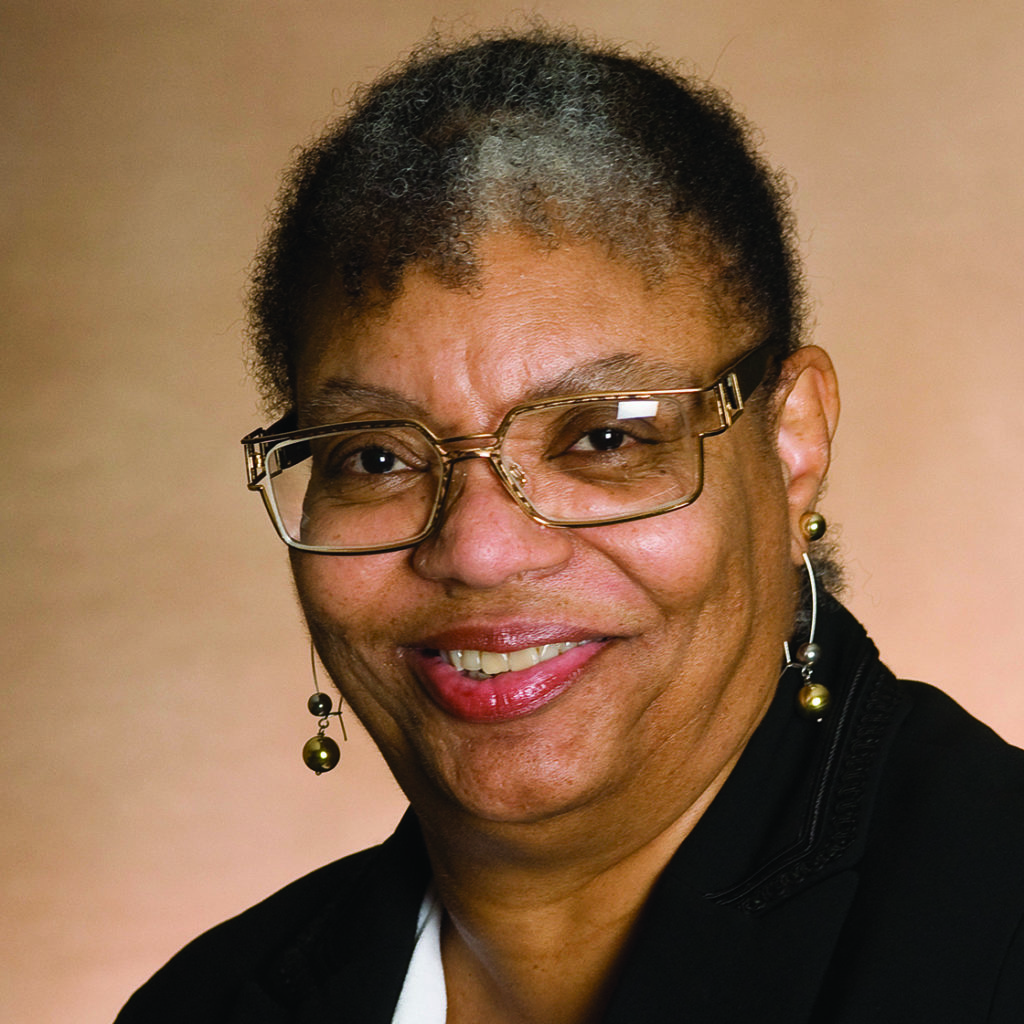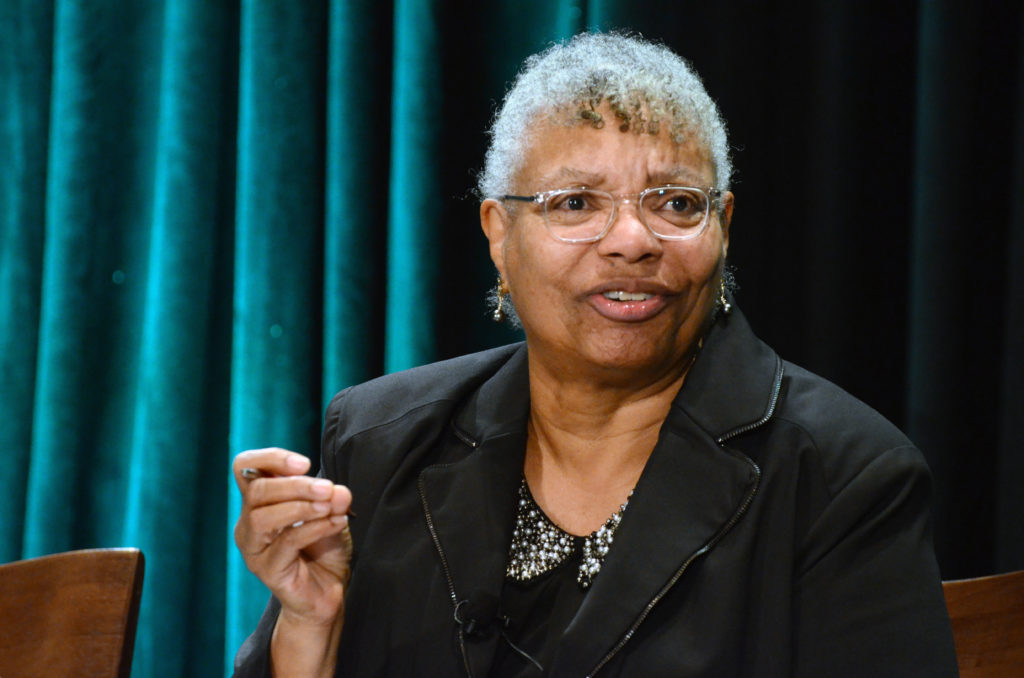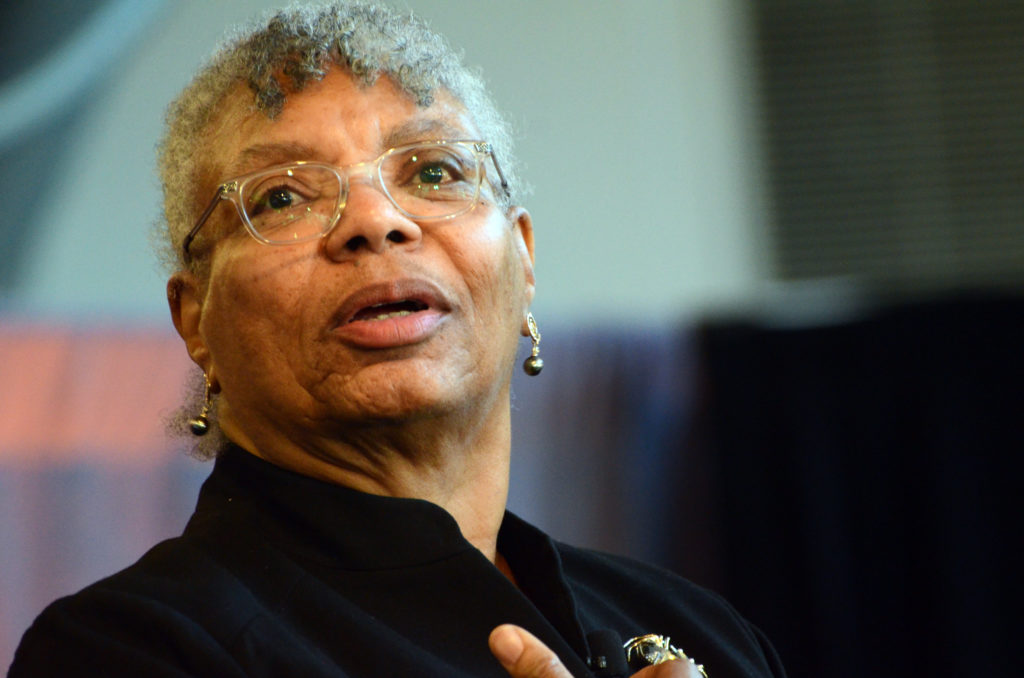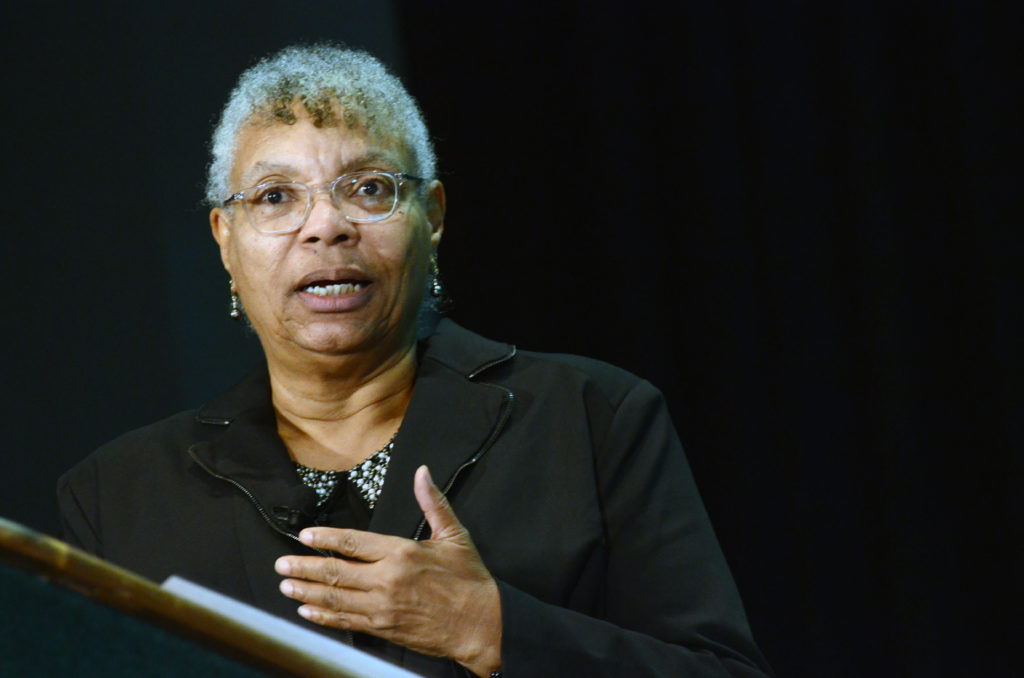Blog
Celebrating Women’s HERstory Month: Marva Hammons

As an agency founded and led by a Black woman, ASCI values the impactful contributions made by women of color who continue to lead with conviction and strength in order to best serve children and families. In honor of National Social Work Month and Women’s History Month, ASCI spoke with five influential female leaders in child welfare to highlight their powerful stories, impacts on children and families, and visions for the future.

Marva Hammons, MSW, Executive Vice President of Child and Family Services at
Casey Family Programs
With over 40 years of experience in child welfare, Marva Hammons considers herself to be a “helping professional,” and an advocate for children and families, stemming from her family’s strong foundation of kinship and value for serving others. Her current work at Casey Family Programs exemplifies her value for equity, while her vision for the future reflects her lifelong commitment to service and continued dedication.
ASCI: How long have you worked in child welfare?
Marva Hammons: I’ve been in an advocate role for children and families for over 40 years. Currently, I am the Executive Vice President for Child and Family Services at Casey Family Programs, headquartered in Seattle, Washington. I’ve been with the organization since January of 2007 and assumed this current position in 2010.
ASCI: What made you choose this field of work?
MH: I grew up in a close-knit Black family in Greenwood, Mississippi, in the deep south. Neither of my parents, or grandparents, or great grandparents for that matter, were college-educated or financially wealthy. We were, however, rich in all ways that matter in the raising and nurturing of children. Everyone that I grew up with, especially my elders, had interesting ideas, strong work ethic and serious skills applied to whatever they undertook. My grandmother’s cakes and pies and biscuits were beyond wonderful. So, the serious skill was used in whatever they did.
All of them, especially my parents, instilled in me and my four sisters a love for family, a respect for our elders, a commitment to the growth and prosperity of our community. The growth and prosperity of community has to do with their standard of relating to other people, their standard of being connected to others and caring for others, not measured by financial wealth and status, but by the values of family and faith. The values of knowing who you are and what you should be in life in order to give back to community. All of those things are probably critical to my choosing the field of work that is a helping profession. I don’t know that when I was in high school or even my first year of college that I knew social work was the “thing,” but I did know that I wanted to be in the helping profession.
The growth and prosperity of community has to do with their standard of relating to other people, their standard of being connected to others and caring for others.
Marva Hammons, speaking of her parents
ASCI: How have you seen kinship care evolve within child welfare? Can you explain your own experiences with kinship care practice and the benefits of kinship care you’ve seen firsthand?
MH: As long as we had food in our house, no family member, friend or neighbor went hungry. Nobody went without shoes or clothing—that is, shoes and clothing for girls—because my parents had five daughters. That’s why I have to mention kin[ship] care. We didn’t call it kin[ship] care then, but that’s exactly what it was. There was always one more place at the table for our cousins and “play” cousins, as we called it then. If someone was getting into trouble or just needed space to de-escalate, there was a place to sleep for a few days at our house. We would all rally around to get our friends, acquaintances and family through difficult phases. That happened naturally without heavy-handed government intervention between a child and the family, as the first response.
The distinction for me is that formal government intervention, when families need a caring, supportive, informal community response, should be the last response rather than the first. The examples that I gave you are what we actually call kinship care practices today. The benefit of that is that children can stay safely within the family because a kin support system is in place. So, I think all of that connection to and caring for others is wrapped into my familial experiences. That becomes the motivation for my career in child welfare, broadly defined, and in all of the kinds of things that have helped me to stay and to grow in what was my career choice. I learned from my family, and of course through the support of kin and fictive kin—of which we had many—that you can’t have enough caring adults in your life. You can’t have enough cousins, aunties, uncles, especially when you’re growing up. And if you have that caring support, it lasts for a lifetime. You could always hearken back to that as you grow older.
I learned from my family, and of course through the support of kin and fictive kin—of which we had many—that you can’t have enough caring adults in your life. You can’t have enough cousins, aunties, uncles, especially when you’re growing up. And if you have that caring support, it lasts for a lifetime.
Marva Hammons
ASCI: What have you found to be most fulfilling about working in the field of social work/child welfare?
MH: There’s so much that has been fulfilling. I think the most fulfilling has been my personal growth as a helping professional coupled with what I have learned from the families and children that I’ve worked with. It’s always easy when you’re fresh, starting out, to think, “I’m going to save the world, and I’ve got all the answers,” but you don’t. It’s really only through your engaging with others in authentic relationships that you grow, and you contribute to the growth of others. And, by some miracle of persistence, and luck, and caring, lives change for the better. That, to me, has been the most fulfilling part of my long career.

ASCI: What do you think needs to be changed about the current child welfare system?
MH: In terms of what needs to be changed, I make a distinction between the public Child Protective Services system and the child welfare system more broadly defined. I would say that the health care system is a child welfare system. The school system is a child welfare system. Typically, when people speak about child welfare, they are really focusing on the Child Protective Services system, not necessarily child helping/child welfare systems at large.
I’ll refer back to my own career and profession as a social worker in the public child welfare system. One of my first jobs was as a Child Protective Services caseworker in a county-administered, state-supervised public child welfare agency. I went out to investigate allegations of child abuse and neglect. I removed children from their homes. I carried caseloads with the goal of reuniting children with their families. And today, I regret that child separation was such a big factor in the practice in my early career. We practiced the way we were taught was best practice. We’ve learned—and I’ve learned since those early days—that the public Child Protective Services system adds to and creates even more trauma for children by child separation, even if the intent is not to harm. So, all of the child-serving systems should have foremost in their policies, practices and intent, to see child separation and removal from home as the absolute last resort for only the most egregious, serious issues.
The first value should be providing any and every support needed by a family, to keep children safe at home with parents and/or kin, all of whom are supported by a caring community. A family-helping system, rather than a family-separating system.
Coming in after the fact is not protecting children. It’s not a health care system that helps to heal children physically if you come in only after things are at its worst stage. If you’re in an education system that really doesn’t meet the child and family where they are to help them learn and grow, then you’re not actually doing what is required of a helping system. So, I think that all child-helping and serving systems should be asking themselves, “What more can we do in our own space to keep children safely in their own homes? What more can we contribute to a child’s well-being while a child remains at home with parents or kin? How can we supplement, not replace, the natural, informal, family-centered, caring supports that are there if we recognize them and we cultivate them?”

ASCI: How does your own work with Casey Family Programs advance changes within these systems?
MH: Casey Family Programs is an extraordinary organization with a mission of providing—through its own direct services—supportive systems of healing and care if children need to be separated from family and placed in foster care, if families are struggling at home. Casey also engages in major efforts to try to improve the current system that we are in. And recognizing all the previous things I mentioned that need to be attended to, Casey hopes, finally, to eliminate the need for foster care.
Eliminating the need for foster care doesn’t diminish the great contribution that foster parents providing foster care and other helping systems make now. However, as our organization has grown and as my team and I have grown, we are beginning to concentrate much more on, what would a child well-being system look like? How can we influence existing formal, governmental and other systems to think in terms of becoming helping systems, becoming well-being systems that provide earlier interactions and interventions that support families in their neighborhood communities? How can we learn to listen to what families say they need rather than giving them a preset menu of things that really don’t fit into what the family actually does need?
So, we are—especially my team, which is a direct-service team—elevating the way we listen to families, enhancing the way we focus with them in a strength-based perspective about what they have right now that they can add to the equation. We want to make sure that their plan goes into the solution. We want to make sure we’re also looking at those things that are inherent to systems and are inherent in our country that don’t support diversity, equity and inclusion, including racial equity. We are making every effort to design our programs and the work of our staff to help them see through the lens of DEI. We want to assure that every day and in every way, with every person and family we interact with, that the lens of inclusion of “What is equity? What is equity for this family?” drives what we do. All of those things, I think, are ways that our current work will benefit families and children. Part of the challenge, I believe, for this country is just looking to face the fact that our systems are racist in so many ways, and that implicit bias permeates so much of what we do in child- and family-serving systems, even if that was not the original intent.
We want to assure that every day and in every way, with every person and family we interact with, that the lens of inclusion of “What is equity? What is equity for this family?” drives what we do.
Marva Hammons
In our current work, we try to ensure we don’t look away from that current reality as we try to serve others. That’s such an important first step if we are to assure that there is racial equity, inclusiveness, diversity, respect and social justice in the work that we do. All of those things are inherent to the work of what we do at Casey Family Programs, the work that I lead—with the team—in the child and family services part of the organization.
Everything I do is really resting on the shoulders of my team. I don’t think I have any accomplishments that I can say accrue only to me. It’s always a team accomplishment. In positions of leadership, my greatest value is to set the tone of respect, of humility and of continuous quality improvement so that we just don’t rest on what we did last year, but we take advantage of every opportunity to analyze what we did last year or even yesterday, and to do it better in the future.
When I was a worker, I would think about my children when I went into a home—trying to keep in mind, how would I want my children to be treated? What outcomes would I want for my children?
Marva Hammons
One of the things I do say I bring with me from my earlier conversation about family is that when I was a worker, I would think about my children when I went into a home—trying to keep in mind, how would I want my children to be treated? What outcomes would I want for my children? Even now, when I’m in a position of leadership and not directly providing services, I think about my grandchildren. How would I want them to be treated? What would I expect the broader community to support so they could stay with their family and be with their kin should that broader community support be needed in a formal, governmental way, if it had to come into play in their lives?
All of that guides me, personally. I try to keep that lens there when I’m talking with my team members. And in my opinion, Casey Family Programs is one of the best organizations at keeping that in the forefront.
ASCI: What advice would you give other young women working in child welfare or considering it?
MH: As an African American woman, I’m always conscious of the importance of my ethnic heritage as I move through this world. My parents and extended family instilled in me a pride in who I am, and that I am neither inferior to nor superior to anyone else. Like anyone else, I’ve had doubts and fears, and sometimes worried about things that in the final analysis don’t make or break me—I know that. But, I’m grounded in my sense of self, in who I am, in knowing that I have got something to give to this world, no matter what box someone else might try to put me in, using my race, gender or anything else about me.
So, it’s that kind of grounding in self that helps you, as the saying goes, “to keep on keeping on.” That is what I would give as a message to any young women who are thinking about a career in child welfare or, frankly, a career in anything else. It’s all of those kinds of things that shore you up when you’re feeling down; those are the kinds of things I think we should never lose sight of, whatever our profession, but particularly in the helping profession—generally speaking, called child welfare. It is other people with whom we are interacting and with whom we have to be our best selves in order to assist them to be their best selves.

ASCI: What are you looking forward to in your career moving forward?
MH: In a career that spans over 40 years, I’ve been a direct practitioner. I’ve led agencies in size from about 2,500 people to more than 20,000 people. I’ve managed budgets as large as $6 billion. I’ve met and established strong relationships with people from all walks of life. Through my career and through one of my board memberships on a family foundation, I’ve traveled to Japan, Poland, England and numerous countries in Africa, including South Africa and Egypt.
I’ve had rich experiences throughout my career. I don’t know that I’ve decided on, realistically, what’s next. Over 40 years I’ve had opportunities that don’t come to many, and I appreciate all of them. What I’ve been thinking about recently, is that I want to continue to have an opportunity to contribute in a good, positive and helping way, in any work that I do moving forward. Most importantly, I want to have a hand in creating something with my daughters and granddaughters that will also give back to community.
Nice to see the smiling face of my former boss – 25+ years ago at Denver department of social services. You were an awesome box and I remember you fondly!